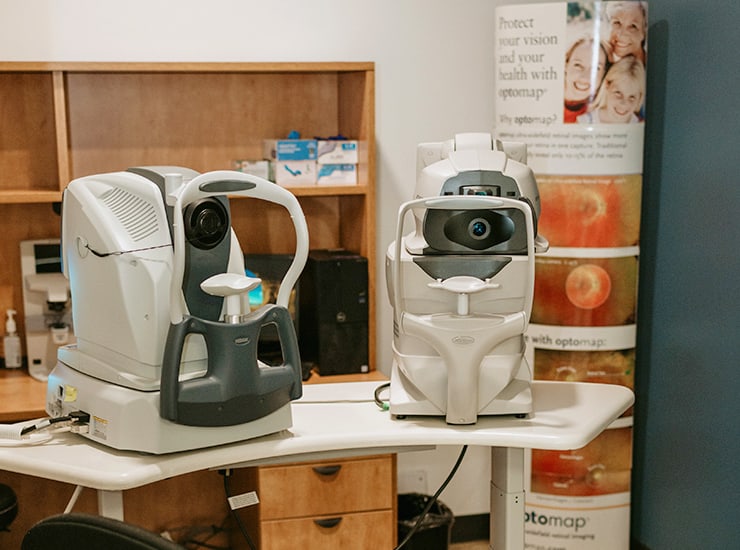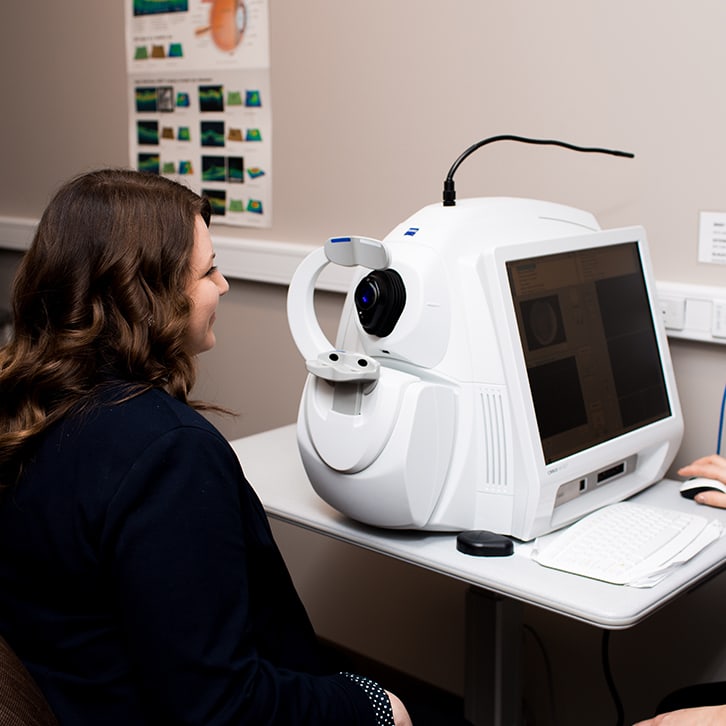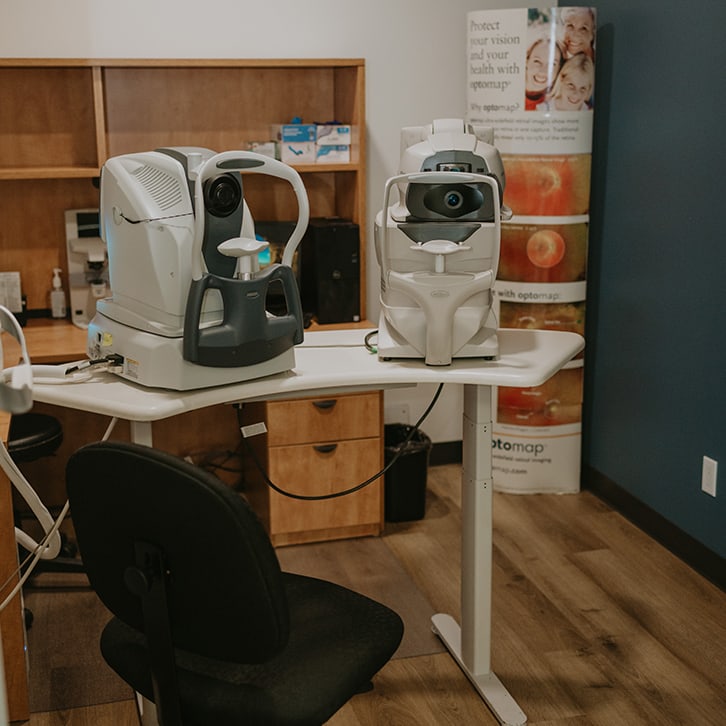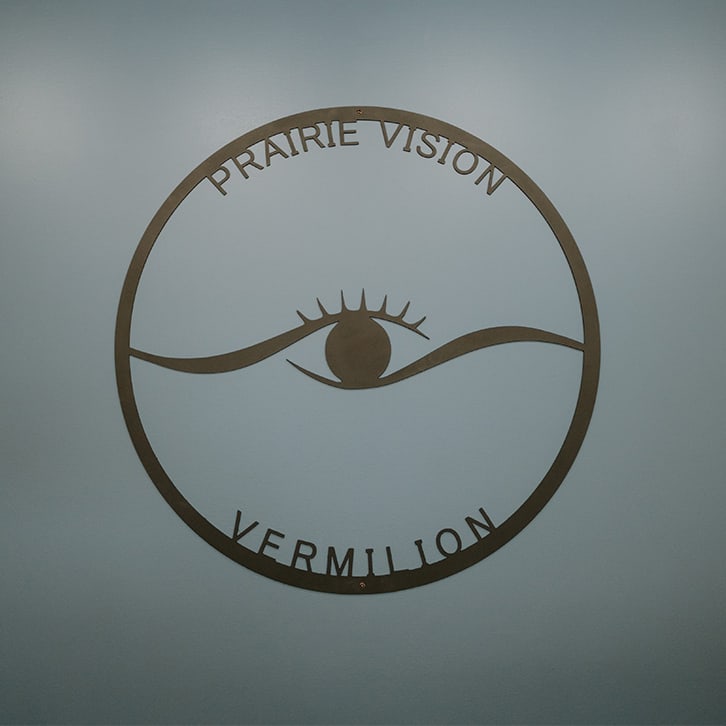Your Partner for Eye Disease Management
Eye diseases can come in many different forms and often progress silently, with no early symptoms. If left untreated, they can sometimes lead to more complicated vision issues. That’s why regular eye exams are so important—they can uncover signs of disease before they affect your vision.
Early diagnosis not only makes managing conditions such as glaucoma, macular degeneration, and cataracts easier but can also help prevent long-term complications.
At Prairie Vision, we bring big-city technology to our clinics in Wainwright and Vermilion, offering diagnostic tools and experienced care to help protect your eyes and vision. Contact us to schedule your appointment today and address eye disease early.
Your Eyes Deserve Quality Care
Regular checkups with our team allow us to identify issues early and provide personalized solutions to preserve your vision. Whether it’s your first eye exam or ongoing care for a chronic condition, our team is here for every generation of your family.
Early detection is key, and we use our diagnostic technology to thoroughly check your eyes for signs of eye disease or other issues.
Common Eye Diseases & Conditions
Age-related eye diseases are the leading cause of blindness in Canada. With over 5.5 million Canadians at risk of sight loss, routine eye exams play a crucial role in protecting eye health and preventing vision loss.
At Prairie Vision, we check for and manage common conditions like glaucoma, cataracts, age-related macular degeneration, retinal detachment, and diabetic retinopathy.
Glaucoma is a group of eye diseases that damage the optic nerve. It is often linked to high intraocular pressure (IOP), but some types can occur even with normal IOP. This condition develops silently, causing irreversible vision loss—often starting with peripheral vision.
At Prairie Vision, we screen for glaucoma by measuring IOP using tools like the Goldmann application and iCare tonometers. We also assess peripheral vision with the Humphrey visual field test.
If diagnosed, glaucoma can be managed with treatments such as prescription eye drops, laser therapy, or surgery to help protect your vision.
Cataracts are the clouding of the eye’s lens that occurs slowly over time. They generally progress painlessly and are caused by the natural aging process, but trauma, medications, overexposure to UV radiation, and health conditions like diabetes can also cause them.
Cataracts are easily diagnosed during a routine eye exam. Mild cataracts can be managed with an updated eyeglass or contact lens prescription, improved lighting, and magnification aids. However, if cataracts worsen and start impacting your quality of life, you may require surgery.
Age-related macular degeneration (AMD) is an eye disease that causes the slow breakdown of the macula, the area of the eye responsible for your sharp, central vision. It generally affects those over 55 but can onset at any age.
There are 2 types of AMD:
- Dry AMD is the most common form of the disease and occurs when the macula thins with age. It progresses slowly over several years and has no noticeable symptoms. There’s no treatment to recover vision loss due to dry AMD, but exercise, eating healthy foods, and quitting smoking can slow its progression.
- Wet AMD is less common but more severe than dry AMD. It occurs when abnormal blood vessels grow on the back of the eye and damage the macula. Fortunately, treatments are available for wet AMD, and they’re effective at preventing vision loss and preserving what vision remains.
Retinal detachment occurs when the thin, light-sensitive lining of tissue at the back of the eye (the retina) pulls away from its usual position. When this happens, the retinal cells are separated from the nourishing blood vessels that provide them with oxygen, endangering your vision.
A retinal detachment is an eye emergency and requires immediate attention. This condition is often painless but can be accompanied by:
- The sudden appearance of many floaters
- Flashes of light in one or both eyes
- Blurred vision
- Gradually reduced side (peripheral) vision
- A curtain-like shadow over your visual field
Aging, underlying health conditions like diabetes, injuries, or other eye diseases can lead to retinal detachment. If you experience a retinal detachment, you’ll likely need surgery to repair it.
Diabetic retinopathy is a retinal disease that can affect those with diabetes. It occurs when high blood sugar levels damage the blood vessels that supply the retina. At first, diabetic retinopathy can develop without symptoms or mild vision changes, but if left untreated, it can lead to blindness.
Learn more about diabetes, diabetic retinopathy, and how we can help.

Getting the Whole Picture
Our team uses a suite of diagnostic tools to help keep your eyes healthy and your vision clear. Our technology allows us to detect eye diseases early and begin preparing a treatment plan that works for you. Our technology includes:
- Optomap: A wide-field retinal imaging system that captures a detailed view of your retina, helping us detect issues like retinal tears, macular degeneration, and diabetic retinopathy.
- OCT (optical coherence tomography): A noninvasive imaging test that creates detailed cross-sections of your retina, allowing us to diagnose and manage conditions like glaucoma and macular degeneration.
- Visual field testing: This test evaluates your peripheral vision, helping us detect changes that could indicate glaucoma or other neurological conditions.
Protect Your Vision—Schedule Your Eye Exam Today
Early detection is key to managing glaucoma and other eye diseases. At Prairie Vision, our team combines technology with personalized care to help safeguard your sight for years to come. Whether it’s a routine checkup or managing a specific condition, we’re here for you and your family every step of the way.
Don’t wait to prioritize your eye health—book your appointment today at our Wainwright or Vermilion location.
Explore Our Services
Protecting Your Vision
Your eyes are your windows to the world and should be nurtured regardless of your age or physical health. A comprehensive eye exam allows our team to detect, manage, and treat eye issues among children and adults.
From early detection of vision problems in children to managing age-related eye conditions in seniors, our experienced eye doctors provide personalized care for every patient.
Your eye health is our priority, and we are committed to delivering the care you need when you need it most. Trust Prairie Vision to be your partner in eye health for life!
Come Visit Our Locations

Wainwright
We serve clients of all ages from Wainwright, Viking, Vermilion, Provost, Lloydminster (Alberta), Macklin (Saskatchewan), and the surrounding areas.
- 2802 15th Ave, Unit 2
- Wainwright, AB T9W 0A4
- Phone: 587-606-0270
- Fax: 780-842-3443
- Email: [email protected]
Hours Of Operation

Vermilion
We serve clients of all ages from Wainwright, Viking, Vermilion, Provost, Lloydminster (Alberta), Macklin (Saskatchewan), and the surrounding areas.
- 5010 50 Street
- Vermilion, AB T9X 1M5
- Phone: 587-606-0394
- Fax: 780-853-6504
- Email: [email protected]
Hours Of Operation
A Variety of Brands Available to You
- Guess
- Lafont
- Michael Kors
- MODO
- Silhouette
- Ray-Ban
- Ted Baker
- Maui Jim
- Alfred Sung
- Eco
- EasyClip
- Evatik
- FYSH
- Nicole Miller
- Nike
- Guess
- Lafont
- Michael Kors
- MODO
- Silhouette
- Ray-Ban
- Ted Baker
- Maui Jim
- Alfred Sung
- Eco
- EasyClip
- Evatik
- FYSH
- Nicole Miller
- Nike







Check Out Our Google Reviews
Wainwright
Vermilion
Blog
Can Dry Eye Cause Floaters?
Dry Eye, Eye HealthThe reality is that dry eye itself doesn’t directly cause floaters. Nonetheless, the 2 conditions can sometimes be interconnected due to underlying factors within the eye. […]
What Is IPL Eye Treatment for Dry Eyes?
Dry EyeIntense pulsed light (IPL) treatment for dry eyes is a noninvasive therapy that uses light energy to help reduce inflammation, restore oil gland function, and improve tear quality.
IPL can offer longer-lasting relief by targeting a common root cause of symptoms, meibomian gland dysfunction (MGD).
[…]
Why Does My Eyelid Hurt When I Blink?
Dry Eye, Eye HealthPlenty of common reasons for eyelid discomfort include eye strain, dryness, allergies, pink eye, and styes. Understanding the underlying differences in these causes can help you take steps to finding relief and recognize when to see an optometrist. […]
Can Myopia Be Reversed?
Children’s Eye Exams, Eye Health, Myopia, Refractive ErrosMyopia, often referred to as nearsightedness, is one of the most common refractive errors in the world today. It’s caused by an abnormal development in […]
Can Dry Eye Cause Floaters?

The reality is that dry eye itself doesn’t directly cause floaters. Nonetheless, the 2 conditions can sometimes be interconnected due to underlying factors within the eye. […]
What Is IPL Eye Treatment for Dry Eyes?

Intense pulsed light (IPL) treatment for dry eyes is a noninvasive therapy that uses light energy to help reduce inflammation, restore oil gland function, and improve tear quality.
IPL can offer longer-lasting relief by targeting a common root cause of symptoms, meibomian gland dysfunction (MGD).
[…]
Why Does My Eyelid Hurt When I Blink?

Plenty of common reasons for eyelid discomfort include eye strain, dryness, allergies, pink eye, and styes. Understanding the underlying differences in these causes can help you take steps to finding relief and recognize when to see an optometrist. […]
Can Myopia Be Reversed?

Myopia, often referred to as nearsightedness, is one of the most common refractive errors in the world today. It’s caused by an abnormal development in […]








